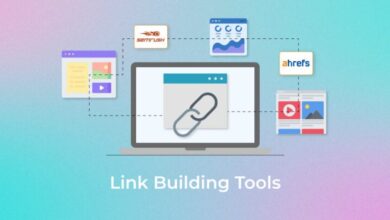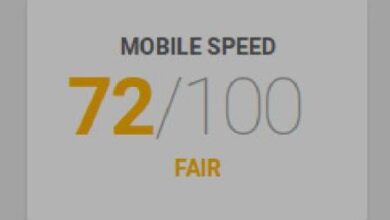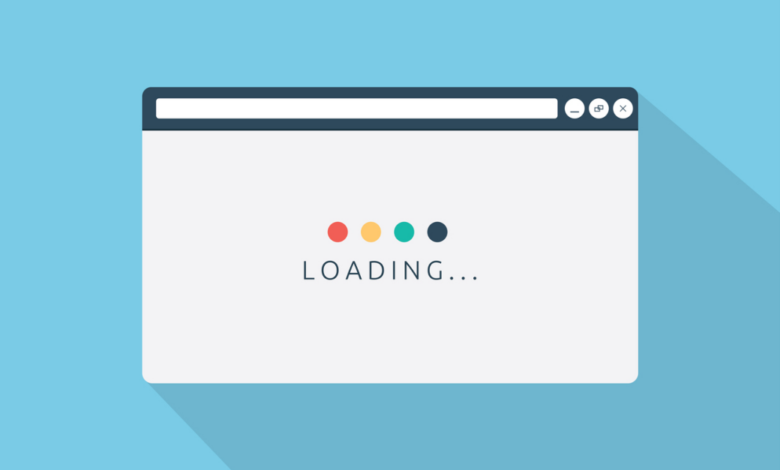
Is Your Website Fast Enough?
Is your website fast enough? That seemingly simple question holds the key to unlocking a world of success or failure online. Website speed isn’t just about technical specs; it’s about user experience, conversions, and even your search engine ranking. A slow website can frustrate visitors, leading to high bounce rates and lost revenue. Conversely, a speedy site keeps users happy, boosting engagement and ultimately your bottom line.
Let’s dive into the nitty-gritty of website speed optimization and discover how to make your online presence a lightning-fast experience for everyone.
We’ll explore various methods for measuring website performance, pinpoint common bottlenecks (like those pesky slow-loading images!), and delve into practical strategies for improvement. From optimizing your code and images to leveraging the power of CDNs and caching, we’ll cover it all. We’ll also discuss the crucial role website speed plays in mobile optimization and , ensuring your site performs brilliantly across all devices and search engines.
Get ready to transform your website from a sluggish snail to a cheetah!
Website Speed and User Experience
Website speed is no longer a mere technical detail; it’s a critical factor directly impacting user experience and, ultimately, your business success. A slow website frustrates visitors, leading to higher bounce rates and lower conversion rates. Conversely, a fast website delights users, boosting engagement and driving conversions. The connection between speed and user satisfaction is undeniable.
The relationship between website speed and user experience is profoundly intertwined. Every second of delay in loading can significantly affect a user’s perception of your website. Slow loading times directly translate to increased bounce rates – the percentage of visitors who leave your site after viewing only one page. This is because impatient users are more likely to abandon a slow-loading site before it even fully renders.
Similarly, slow speeds negatively impact conversion rates – the percentage of visitors who complete a desired action, such as making a purchase or signing up for a newsletter. A frustrating experience makes users less likely to complete any action on your site.
Impact of Slow Loading Times on User Frustration and Engagement
Slow loading times directly contribute to user frustration and reduced engagement. Imagine trying to access information on a website that takes forever to load; the experience is irritating and time-consuming. This frustration can lead to users abandoning the site altogether, negatively affecting your website’s metrics. Furthermore, slow loading can also lead to a diminished user experience. Users might struggle to navigate the website, find the information they need, or even complete a transaction.
This negatively impacts their overall perception of your brand and its products or services. A poor experience often leads to negative reviews and word-of-mouth marketing, further harming your business.
Examples of Fast Loading Speeds Improving User Satisfaction and Loyalty
Amazon, known for its seamless user experience, prioritizes website speed. Their investment in infrastructure and optimization ensures fast loading times, contributing to their high user satisfaction and loyalty. Similarly, Google consistently optimizes its search engine for speed, understanding that fast loading is crucial for user retention and a positive brand perception. These companies understand that a fast website directly translates to a better user experience, resulting in increased engagement, higher conversion rates, and ultimately, a more loyal customer base.
A quick and efficient website fosters a positive perception of the brand, encouraging users to return for future interactions.
Comparison of Fast vs. Slow Website Speeds on Key Metrics, Is your website fast enough
| Metric | Fast Website | Slow Website | Impact |
|---|---|---|---|
| Bounce Rate | Low (e.g., < 20%) | High (e.g., > 50%) | Significant negative impact on user engagement and conversion rates for slow websites. |
| Conversion Rate | High (e.g., > 5%) | Low (e.g., < 2%) | Faster websites significantly improve the likelihood of users completing desired actions. |
| Average Session Duration | High (e.g., > 2 minutes) | Low (e.g., < 30 seconds) | Users tend to spend more time on websites that load quickly and are easy to navigate. |
| User Satisfaction | High | Low | Direct correlation between speed and overall user happiness. |
Measuring Website Performance
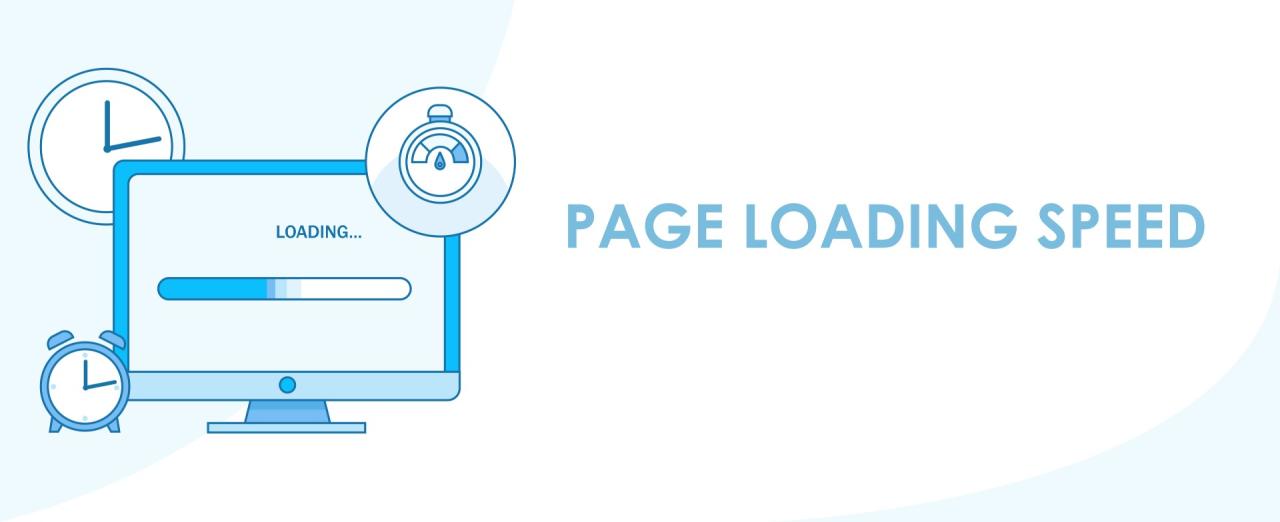
Source: grofuse.com
Understanding how fast your website truly is goes beyond subjective feelings. Accurate measurement is crucial for identifying bottlenecks and improving user experience. This involves employing various tools and techniques to analyze different aspects of website speed, and interpreting the resulting data to make informed optimization decisions.
Measuring website performance requires a multi-faceted approach, going beyond simply checking load times. We need to consider various factors influencing the overall user experience, from initial page load to the responsiveness of interactive elements. The right metrics, combined with effective testing strategies, will provide a comprehensive picture of your website’s performance.
Website Speed Testing Tools and Techniques
Several methods exist for assessing website speed. These range from simple browser-based tools to sophisticated performance monitoring platforms. Each offers unique insights into different aspects of website performance. The choice of tool depends on your specific needs and technical expertise.
Choosing the right tool often depends on your technical skills and the level of detail required. Simple tools are great for quick checks, while more advanced platforms provide in-depth analysis for professionals.
- Google PageSpeed Insights: This free tool analyzes your website’s performance and provides suggestions for improvement. It offers scores for both mobile and desktop, highlighting areas needing attention like image optimization and code efficiency. It also provides lab data (simulated performance) and field data (real-world user experience).
- GTmetrix: GTmetrix offers a detailed performance report, including waterfall charts visualizing the loading process of individual resources. This allows for pinpointing slow-loading elements. It combines lab data with real user monitoring (RUM) for a comprehensive analysis.
- WebPageTest: This powerful tool allows for customized testing from various geographic locations and using different browsers and connection speeds. This provides insights into performance variations based on location and user conditions. The detailed waterfall charts and video recordings of page load are extremely useful for detailed analysis.
- Lighthouse (within Chrome DevTools): Integrated directly into the Chrome browser, Lighthouse provides an automated audit of performance, accessibility, best practices, , and progressive web app aspects. It’s a versatile tool for comprehensive website analysis.
Key Performance Indicators (KPIs) for Website Speed
Focusing on the right KPIs is critical for effective performance monitoring and optimization. These metrics provide quantifiable data to track progress and identify areas for improvement. Prioritizing certain KPIs will depend on your business goals and the type of website you operate.
Understanding which KPIs matter most allows for focused optimization efforts. Tracking these metrics over time provides valuable data for identifying trends and the effectiveness of optimization strategies.
- First Contentful Paint (FCP): Measures the time it takes for the browser to render the first piece of content on the page. A lower FCP indicates a faster perceived load time for users.
- Largest Contentful Paint (LCP): Measures the time it takes to render the largest content element on the page. This often represents the main content of the page, making it a critical metric for user experience.
- Cumulative Layout Shift (CLS): Measures the visual stability of the page. A high CLS score indicates that the page’s content is shifting unexpectedly, which is very disruptive to users.
- Time to First Byte (TTFB): Measures the time it takes for the browser to receive the first byte of data from the server. A high TTFB usually points to server-side issues.
- Total Blocking Time (TBT): Measures the total time spent blocked by long tasks during the page load. This affects the responsiveness of the page and impacts user experience.
Best Practices for Website Speed Testing and Analysis
Regular testing and thorough analysis are crucial for maintaining website performance. Establishing a consistent testing schedule and using a combination of tools provides a holistic view of your website’s speed and allows for proactive optimization.
Consistent testing, coupled with detailed analysis, is vital for identifying and resolving performance issues. By combining multiple tools and focusing on key metrics, you can ensure your website remains fast and efficient.
- Regular Testing Schedule: Implement a regular testing schedule, such as weekly or monthly, to track performance trends and identify potential issues early.
- Test from Multiple Locations: Use tools that allow testing from various geographic locations to understand how performance varies based on user location and network conditions.
- Analyze Waterfall Charts: Carefully analyze waterfall charts to identify specific resources that are slowing down your website’s load time.
- Prioritize Critical Rendering Path: Focus on optimizing the critical rendering path – the sequence of events that lead to the initial rendering of the page content.
- Compare Results Over Time: Track your KPIs over time to assess the impact of your optimization efforts and identify areas where further improvements are needed.
Identifying Website Speed Bottlenecks
Slow website loading times are a major frustration for users and can significantly impact your online success. A slow website leads to higher bounce rates, lower conversion rates, and ultimately, a loss of potential customers. Identifying the root causes of this slowness – the bottlenecks – is crucial for improvement. This involves understanding the various factors that contribute to a sluggish website and employing strategies to optimize performance.Understanding common causes of slow loading times is the first step towards a faster website.
Several key areas often contribute to performance issues.
Large Images
Large image files are a frequent culprit in slow loading times. High-resolution images, especially those not optimized for web use, significantly increase page size. For example, an unoptimized 5MB image can take considerably longer to load than a similarly sized, optimized image of 500KB. This delay frustrates users and negatively impacts search engine rankings.
Inefficient Code
Poorly written or bloated code can dramatically slow down a website. Unnecessary scripts, inefficient queries to databases, and poorly structured CSS and JavaScript files all contribute to increased loading times. Imagine a poorly organized warehouse – finding the right item takes forever. Similarly, a website with inefficient code struggles to deliver content quickly. A well-structured and optimized codebase, on the other hand, functions like a well-organized warehouse, delivering the necessary items swiftly.
Slow Server Response
The server that hosts your website plays a vital role in its speed. A slow or overloaded server will struggle to deliver content promptly, regardless of how well-optimized your website’s code and images are. This could be due to insufficient server resources, inefficient server configuration, or a poorly optimized database. For example, a website hosted on shared hosting with limited resources might experience significantly slower response times compared to one hosted on a dedicated server with ample resources.
Optimizing Images to Reduce Page Load Time
Optimizing images is a critical step in improving website speed. This involves reducing file size without sacrificing significant image quality. Strategies include using appropriate image formats (like WebP for superior compression), resizing images to their actual display dimensions, and employing compression tools to reduce file size. For instance, a high-resolution image intended for a thumbnail might be unnecessarily large.
Resizing it to the thumbnail’s dimensions and compressing it reduces its size considerably without noticeable quality loss to the user.
Impact of Inefficient Code on Website Performance
Inefficient code can manifest in many ways, each contributing to slower loading times. Redundant JavaScript functions, unoptimized CSS styles, and poorly structured HTML all add to the overall page size and processing time. This not only impacts loading speeds but can also increase the load on the server. For example, a script that repeatedly fetches the same data from a database represents inefficient coding that needlessly slows down the page load.
A thorough code review and optimization can significantly improve performance.
Identifying and Resolving Website Speed Bottlenecks: A Flowchart
Imagine a flowchart with the following steps:
1. Start
Begin the process of identifying website speed bottlenecks.
2. Perform Website Speed Test
Use tools like Google PageSpeed Insights or GTmetrix to analyze your website’s performance and identify areas for improvement. These tools provide detailed reports highlighting specific issues such as slow server response times, large image sizes, and inefficient code.
3. Analyze Results
Carefully examine the results from the speed test, focusing on the key performance indicators (KPIs) such as First Contentful Paint (FCP), Largest Contentful Paint (LCP), Cumulative Layout Shift (CLS), and Time to Interactive (TTI).
4. Identify Bottlenecks
Based on the analysis, pinpoint the specific elements contributing to slow loading times. This could include large images, inefficient JavaScript, slow server response, or rendering blocking CSS.
5. Prioritize Issues
Determine which bottlenecks have the most significant impact on the overall page load time and address those first.
6. Implement Optimization Strategies
Employ the appropriate optimization techniques. This could involve compressing images, minifying code, optimizing databases, or upgrading server resources.
7. Retest and Iterate
After implementing changes, retest your website’s speed to evaluate the effectiveness of your optimizations. Iterate on the process until you achieve satisfactory performance.
8. End
The process concludes once the website speed has reached the desired level.
Improving Website Speed
Website speed is paramount for user experience and . A slow website leads to high bounce rates, frustrated users, and lower search engine rankings. Optimizing your website’s speed involves a multi-faceted approach, targeting both front-end code and back-end server configurations. This detailed plan Artikels key strategies for significant performance improvements.
Code Optimization Techniques
Efficient coding practices are crucial for minimizing page load times. Minimizing HTTP requests, reducing the size of HTML, CSS, and JavaScript files, and leveraging browser caching are all essential. For example, minifying CSS and JavaScript files removes unnecessary whitespace and comments, reducing file sizes. Concatenating multiple CSS or JavaScript files into a single file reduces the number of HTTP requests the browser needs to make.
Furthermore, using efficient algorithms and data structures in your code can significantly reduce processing time. Consider using a tool like Google PageSpeed Insights to identify specific areas for code optimization.
Server Configuration Improvements
Server-side optimizations are just as important as front-end improvements. Choosing the right hosting provider with sufficient resources is critical. A well-configured server can significantly reduce latency and improve response times. Consider using a Content Delivery Network (CDN) to distribute your website’s content across multiple servers geographically closer to your users. This reduces the distance data needs to travel, resulting in faster load times.
Furthermore, optimizing database queries and using caching mechanisms on the server-side can significantly reduce the load on your server and improve response times. For example, implementing server-side caching can store frequently accessed data in memory, reducing the need to repeatedly access the database.
Image Optimization
Images often contribute significantly to page load times. Optimizing images involves reducing their file size without sacrificing quality. Techniques include using appropriate image formats (WebP offers excellent compression), compressing images using tools like TinyPNG or ImageOptim, and resizing images to the exact dimensions needed on your website. Avoid using unnecessarily large images; smaller images load much faster. For example, a 2MB image could easily be reduced to 200KB with minimal visual loss using appropriate compression techniques.
Lazy loading images is another effective strategy; this technique only loads images when they are about to enter the viewport, significantly improving initial page load time.
Reducing HTTP Requests
Every element on your webpage – images, CSS files, JavaScript files, etc. – requires a separate HTTP request. Minimizing these requests is crucial. Combining CSS and JavaScript files, as mentioned earlier, is one effective method. Another is using CSS sprites, which combine multiple small images into a single image, reducing the number of requests.
Inline critical CSS can also improve initial render time by delivering essential CSS directly in the HTML, avoiding a separate request. This strategy is especially beneficial for above-the-fold content.
Content Delivery Networks (CDNs)
CDNs distribute your website’s content across multiple servers globally. When a user accesses your website, the CDN delivers the content from the server geographically closest to them. This reduces latency and improves loading speeds, particularly for users located far from your primary server. Popular CDNs include Cloudflare, Akamai, and Amazon CloudFront. The choice of CDN depends on factors like pricing, features, and performance in your target regions.
For example, a global CDN like Cloudflare offers extensive coverage and robust features, while a regional CDN might be a more cost-effective option for smaller websites with a limited geographic reach. Choosing a CDN requires careful consideration of your specific needs and budget.
Caching Mechanisms
Caching stores frequently accessed data in a readily available location, reducing the need to repeatedly fetch it from the source. Browser caching stores website assets (images, CSS, JavaScript) locally on the user’s computer, speeding up subsequent visits. Server-side caching stores frequently accessed data on the server, reducing the load on the database. Content delivery networks (CDNs) also utilize caching to further enhance performance.
Effective caching strategies significantly improve website speed and reduce server load. Implementing various caching levels—browser, server, and CDN—provides a comprehensive approach to optimizing performance.
Mobile Website Speed
In today’s mobile-first world, website speed on mobile devices is paramount. A slow-loading mobile website can significantly impact user experience, leading to high bounce rates, lost conversions, and damage to your brand reputation. Speed is no longer a luxury; it’s a necessity for survival in the competitive online landscape.Mobile website speed directly correlates with user satisfaction. A slow-loading page frustrates users, causing them to abandon your site before they even see your content.
This translates to lost opportunities, whether it’s a missed sale, a failed lead generation, or simply a negative impression of your brand. Google also prioritizes mobile-friendly and fast-loading websites in its search engine rankings, further highlighting the importance of optimization.
Challenges of Mobile Website Optimization
Optimizing websites for mobile devices presents unique challenges compared to desktop optimization. Mobile devices often have limited processing power, slower internet connections (especially on 3G or 4G networks), and smaller screens. These limitations necessitate a different approach to website design and development to ensure a smooth and fast user experience. Furthermore, the diversity of mobile devices and operating systems adds another layer of complexity.
Ensuring compatibility and optimal performance across various screen sizes, resolutions, and browsers is crucial. Lastly, managing and minimizing data usage is critical for users on limited data plans.
Responsive Design and Mobile-First Optimization
Responsive design and mobile-first optimization are two key strategies for improving mobile website speed. Responsive design ensures that your website adapts seamlessly to different screen sizes and resolutions, providing a consistent user experience across all devices. This approach uses flexible layouts and CSS media queries to adjust the website’s appearance based on the device’s screen size. Mobile-first optimization, on the other hand, prioritizes the mobile experience during the design and development process.
The website is initially built for mobile devices and then adapted for larger screens. This approach ensures a fast and efficient mobile experience, which is often the most critical aspect for many users. By focusing on mobile first, developers can eliminate unnecessary elements and streamline the codebase, leading to faster load times.
Mobile vs. Desktop Website Speed Comparison
The following table compares hypothetical desktop and mobile website speed test results. These are illustrative examples and real-world results will vary depending on various factors including server location, website complexity, and network conditions.
| Test | Desktop Speed (seconds) | Mobile Speed (seconds) | Difference (seconds) |
|---|---|---|---|
| Page Load Time | 1.5 | 3.0 | 1.5 |
| Time to First Byte (TTFB) | 0.2 | 0.5 | 0.3 |
| Largest Contentful Paint (LCP) | 0.8 | 1.8 | 1.0 |
| Cumulative Layout Shift (CLS) | 0.05 | 0.15 | 0.1 |
The Impact of Website Speed on
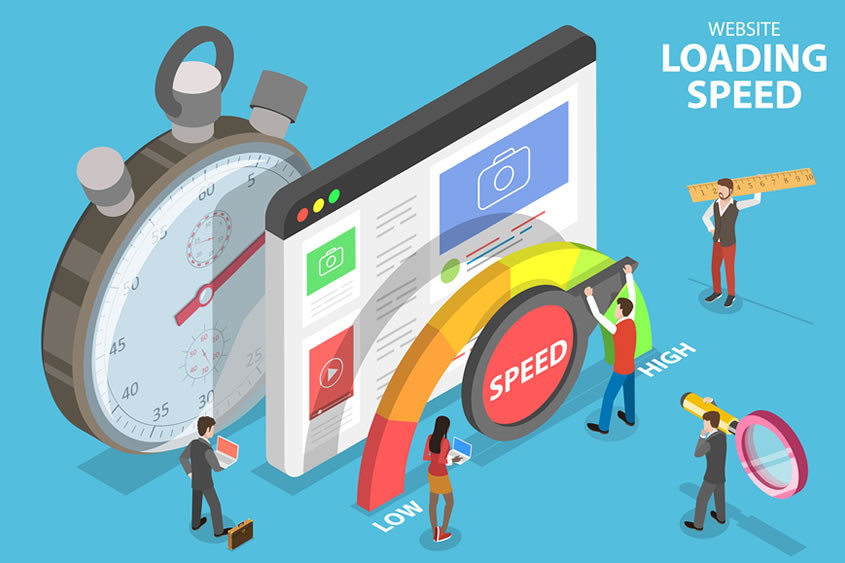
Source: vaccodadesign.com
Website speed isn’t just about user experience; it’s a critical ranking factor for search engines like Google. A slow website can significantly hinder your search engine optimization () efforts, impacting your organic visibility and ultimately, your bottom line. Understanding this relationship is crucial for any website owner aiming for top search results.Search engines consider website speed as a ranking signal because it directly correlates with user satisfaction.
A fast-loading website provides a better user experience, leading to higher engagement, lower bounce rates, and increased time on site. These positive user signals are strong indicators of a high-quality website, prompting search engines to rank it higher in search results. Conversely, a slow website frustrates users, causing them to leave quickly, signaling to search engines that the website is not providing a valuable experience.
Search Engines’ Use of Website Speed as a Ranking Factor
Google, in particular, has publicly stated that page speed is a ranking factor. They utilize various tools and metrics to assess website speed, including Core Web Vitals, which measure aspects like Largest Contentful Paint (LCP), Cumulative Layout Shift (CLS), and First Input Delay (FID). These metrics provide a comprehensive understanding of the user experience from the perspective of speed and stability.
A website performing poorly on these metrics will likely receive a lower ranking than a similar website with better performance. Furthermore, Google’s PageSpeed Insights tool provides detailed reports and suggestions for improvement, allowing website owners to directly address speed-related issues.
Using Website Speed Data to Improve Performance
Website speed data, readily available through tools like Google PageSpeed Insights and GTmetrix, offers valuable insights for improvement. Analyzing these reports reveals specific areas for optimization, such as optimizing images, minimizing HTTP requests, leveraging browser caching, and improving server response time. By addressing these issues, website owners can directly improve their Core Web Vitals scores, leading to better search engine rankings and increased organic traffic.
For example, identifying a slow-loading image through these tools allows for optimization, such as compression or resizing, resulting in a noticeable improvement in page load speed. This direct correlation between fixing identified issues and improved metrics is a key element of effective strategy.
Visual Representation of Website Speed and Organic Search Traffic
Imagine a graph with two lines. The X-axis represents time (e.g., months), and the Y-axis represents two different metrics: one line depicts website loading speed (measured in seconds), steadily decreasing over time, and the other line shows organic search traffic (measured in visitors), steadily increasing over time. The two lines show a positive correlation; as website speed improves (the first line goes down), organic search traffic increases (the second line goes up).
The graph clearly visualizes how improvements in website speed directly contribute to increased organic traffic. The steeper the decline in the website speed line, the more rapid the increase in the organic search traffic line, illustrating a strong cause-and-effect relationship. The graph could also include data points showing specific website optimization efforts undertaken (e.g., image optimization, caching implementation) and their corresponding impact on both website speed and organic traffic.
So, is your website fast enough? Page speed is crucial for user experience, and that translates directly to your bottom line. Think about how important speed is when you’re trying to get views on your videos – check out this great guide on getting it on with youtube to see how optimization impacts engagement. A slow website can be just as detrimental as a poorly produced video, so remember that speed matters across all your online platforms.
This allows for a clear visual demonstration of the ROI of website speed optimization efforts.
Conclusion
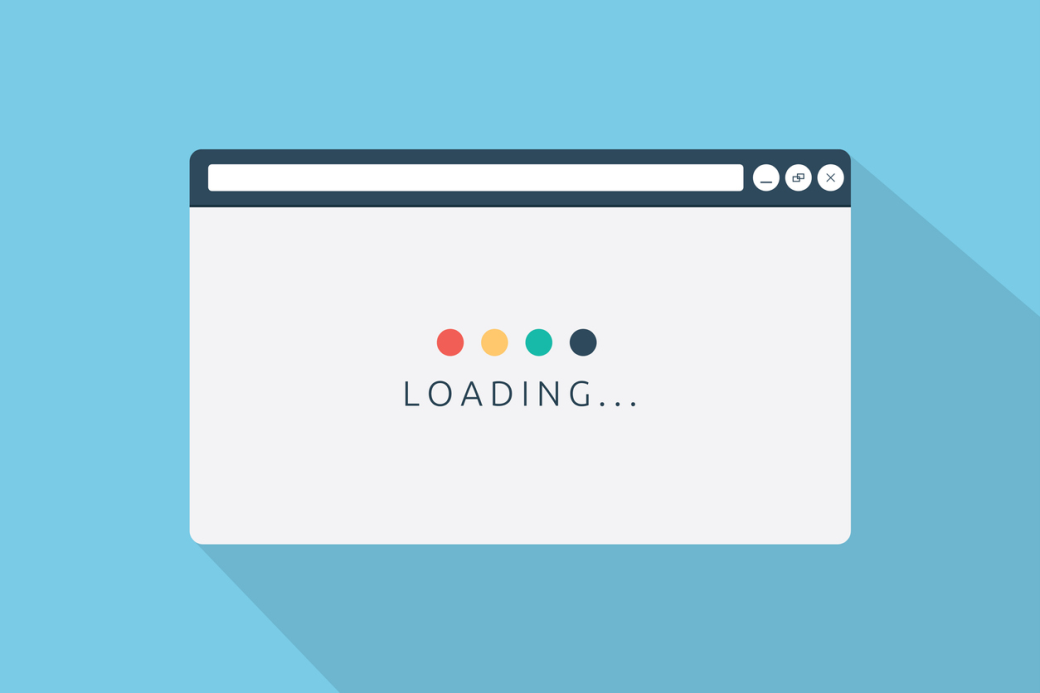
Source: shift4shop.com
Ultimately, a fast website isn’t just a nice-to-have; it’s a necessity in today’s digital landscape. By understanding the impact of speed on user experience, , and conversions, and by implementing the optimization strategies discussed, you can significantly improve your website’s performance and achieve your online goals. Remember, a fast website is a happy website – and a happy website is a successful one! So, take the time to assess your site’s speed, identify areas for improvement, and watch your online success soar.
FAQ Corner: Is Your Website Fast Enough
What are the most common causes of slow website load times?
Large images, inefficient code, slow server response times, and lack of caching are major culprits.
How often should I test my website speed?
Regular testing, at least monthly, is recommended to catch and address issues proactively.
What’s the difference between a CDN and caching?
A CDN distributes your website’s content across multiple servers globally for faster access, while caching stores frequently accessed data locally for quicker retrieval.
Can a slow website hurt my ?
Absolutely! Search engines consider website speed a ranking factor, so a slow site can negatively impact your search engine rankings.


